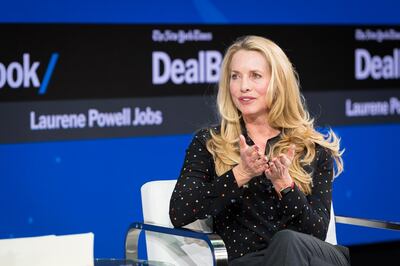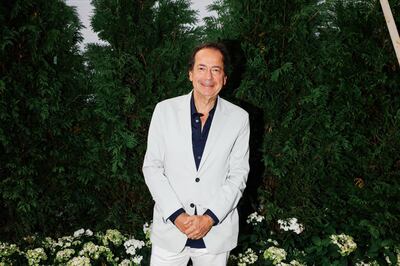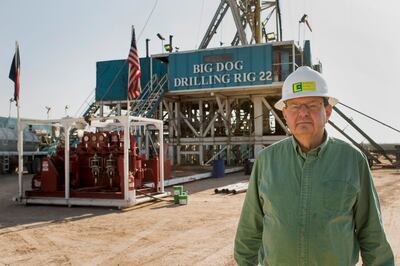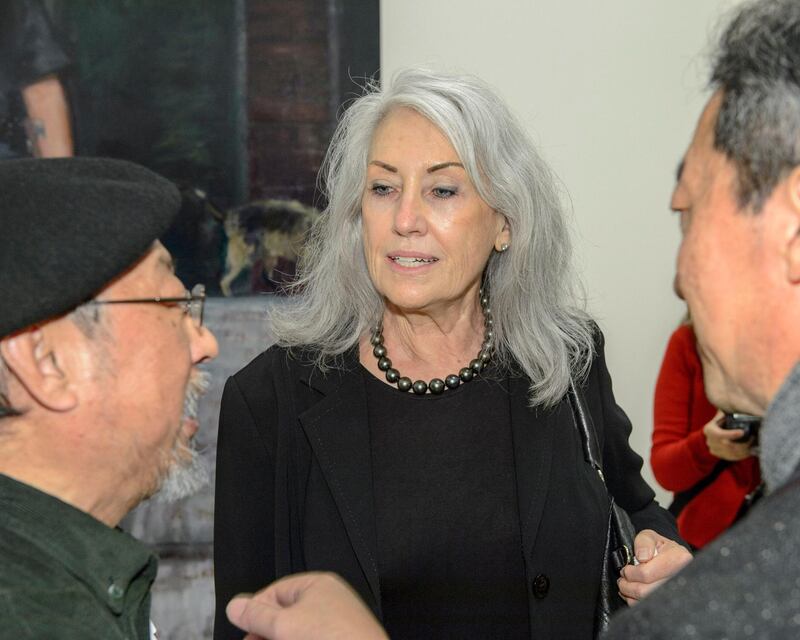Judith Neilson
A billionaire Australian philanthropist has vowed to spend at least Aus$100 million (Dh268m) of her fortune to create a journalism institute committed to "the pursuit of truth".
Judith Neilson said the Sydney-based institute will "celebrate and encourage quality journalism in Australia and the world" at a time of "massive change" and challenges for the news media.
"Journalism doesn't just need critics, it needs champions - people and institutions with the resources to help educate, encourage and connect journalists and their audience in pursuit of excellence," she says.
Zimbabwe-born Ms Neilson, a prominent patron of the arts in Sydney, says the Judith Neilson Institute for Journalism and Ideas would run educational programmes and events and provide grants for the development of independent, non-partisan reporting.
Ms Neilson says one of the first priorities of the organisation - once it is formally launches in 2019 - will be to support more "informed, intelligent" reporting on Asia.
"Through targeted funding and education we can strengthen Australian journalism and help restore faith in its central role in a healthy democracy," she says.
"As an avid consumer of news, I recognise the need to support evidence-based journalism and the pursuit of truth in an increasingly complicated and confusing world."
News organisations in Australia have struggled in recent years with falling revenue and shrinking staff, as giants like Google and Facebook dominate the digital economy.
Ms Neilson's announcement came the day after an Australian court gave final approval to the biggest media merger in the country's history, prompting new concerns for the future on independent journalism.
The takeover of Fairfax Media, Australia's oldest newspaper group, by television broadcaster Nine Entertainment, is widely expected to lead to further cutbacks in newsrooms.
The merger left only four major media companies in Australia, dominated by Rupert Murdoch's News Corporation.
Ms Neilson's fortune is estimated at around US$1.1 billion by Forbes, built through property investments and her holdings in international equities firm Platinum Asset Management.

Laurene Powell Jobs
Laurene Powell Jobs, the billionaire widow of Steve Jobs, is expanding her media empire.
Emerson Collective, a philanthropic firm founded by Ms Powell Jobs, announced last month that it acquired the publisher of Pop-Up Magazine and the California Sunday Magazine.
Pop-Up is known for its live touring show, which has included stops at venues like Lincoln Centre in New York. California Sunday Magazine, meanwhile, is a four-year-old publication focused on feature stories and photography.
The move follows Emerson’s acquisition last year of majority ownership in Atlantic magazine, part of a broader push to support journalism - at a time when the industry is under pressure both online and in print. Ms Powell Jobs also has become a force in Hollywood, pumping money into documentary films and series.
The philanthropist, who serves as the president of Emerson, has a net worth of $19.1bn, according to the Bloomberg Billionaires Index. She inherited her husband’s stakes in Walt Disney and Apple.

John Paulson
A coalition of gold investors, including firms backed by billionaires John Paulson and Naguib Sawiris, is taking aim at mining executives who don’t have enough skin in the game.
Businesses tend to perform better when top managers have a high ownership-to-pay ratio, according to the inaugural report of the newly launched Shareholders’ Gold Council, which tracked 17 gold companies.
“You have a much bigger ownership in those stocks that have performed above the median and the gold price in the last five years,” says Christian Godin, who heads the Shareholders’ Gold Council.
The report compared stock ownership by chairmen and women and chief executives with five-year compensation, and then compared that ratio to shareholder returns.
Of the 30 executives listed, Kirkland Lake Gold's chairman Eric Sprott and Franco-Nevada’s Pierre Lassonde had by far the highest ownership-to-pay ratio, at 381 times and 160 times compensation, compared with single digits or lower for most of the pack, the report shows. Both companies have performed well in the five years until November 15, with 256 per cent and 61 per cent total shareholder returns, the gold council’s analysis shows.
If those two are stripped out, the top three chairmen in terms of ownership versus their pay are Bill Beament of Northern Star Resources, Doug Holtby of Wheaton Precious Metals and Evolution Mining’s Jake Klein. The lowest ratios fall to Kinross Gold’s John Oliver, Yamana Gold’s Peter Marrone and Alamos Gold’s Paul Murphy, according to the report.
The coalition also tracked chief executive ownership versus pay, listing chairmen as de facto CEOs for four companies, meaning Mr Beament, Mr Klein, Mr Marrone and Barrick Gold’s John Thornton appear on both tables.
On both tables, Mr Kinross and Mr Yamana had the lowest executive share ownership to five-year pay ratios. In terms of shareholder returns, Mr Yamana offered the worst number - negative 73 per cent - and Mr Kinross was the fourth-weakest.
Northern Star and Evolution were the best performers with 869 per cent and 267 per cent returns, respectively, over five years, in US dollars, assuming dividends were reinvested. In comparison, spot gold fell 6 per cent over the five years through November 15, while the VanEck Vectors Gold Miners ETF declined 21 per cent.
The gold council, which was spearheaded by Paulson & Co. at the Denver Gold Forum in 2017, launched in September. Its 15 other investors include Egyptian billionaire Naguib Sawiris’ La Mancha Group; John Hathaway, a general partner at Tocqueville Asset Management; and activist fund Livermore Partners.

Autry Stephens
When Autry Stephens struck out on his own in 1996 to pursue oil riches, he named his one-rig outfit Big Dog Drilling.
Twenty years on, the moniker seems prophetic. Mr Stephens, 80, owns the largest closely held oil producer in Texas by production volume, Endeavor Energy Resources. The Midland-based firm has suitors including Exxon Mobil and Chevron weighing bids that could value the company at $15bn, including about $1bn of debt.
A sale of that magnitude would rank among the 10-biggest deals for a private energy company and make Mr Stephens one the world’s richest people. He and his family own all of Endeavor, which controls drilling rights on 329,000 net acres in the Midland Basin, a subsection of the Permian Basin of West Texas.
While oil’s drop of more than 30 per cent in the past two months may deter some potential acquirers, Endeavor holds almost unparalleled opportunity for Big Oil: one of the last major land positions in private hands in the heart of the Permian Basin.
Land values in the shale-rich territory have soared as investors flocked to get a piece of the country’s most-productive oil region. A sale would tap into those lofty valuations and potentially give Mr Stephens a fortune worth as much as $14bn, which would rank him among the world’s 100 wealthiest people. It would also make him the richest oil mogul in the US, ahead of Continental Resources’ Harold Hamm and George Kaiser of Kaiser-Francis Oil.
Mr Stephens, who grew up on a peanut and watermelon farm in central Texas, declined to comment on his wealth.







